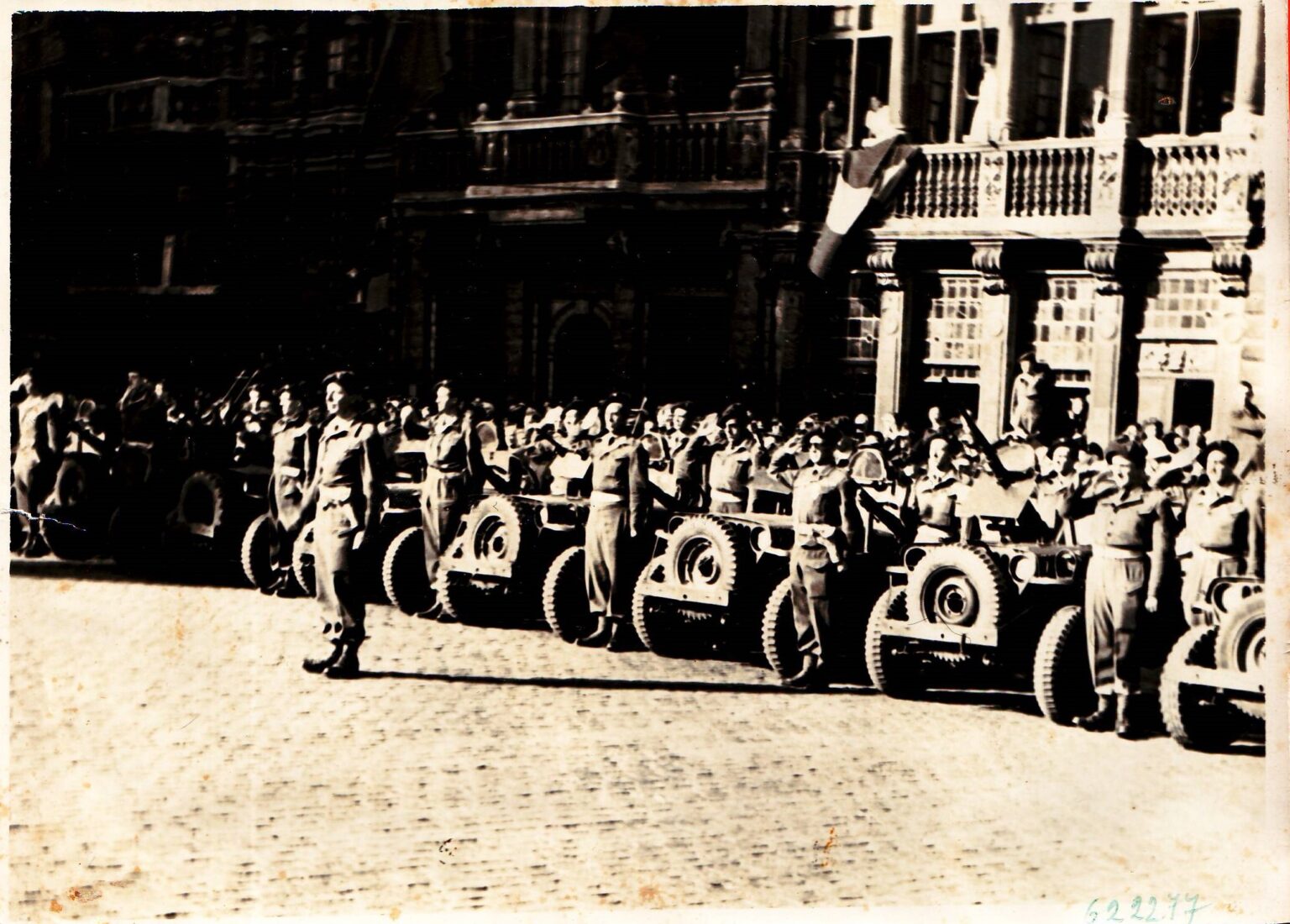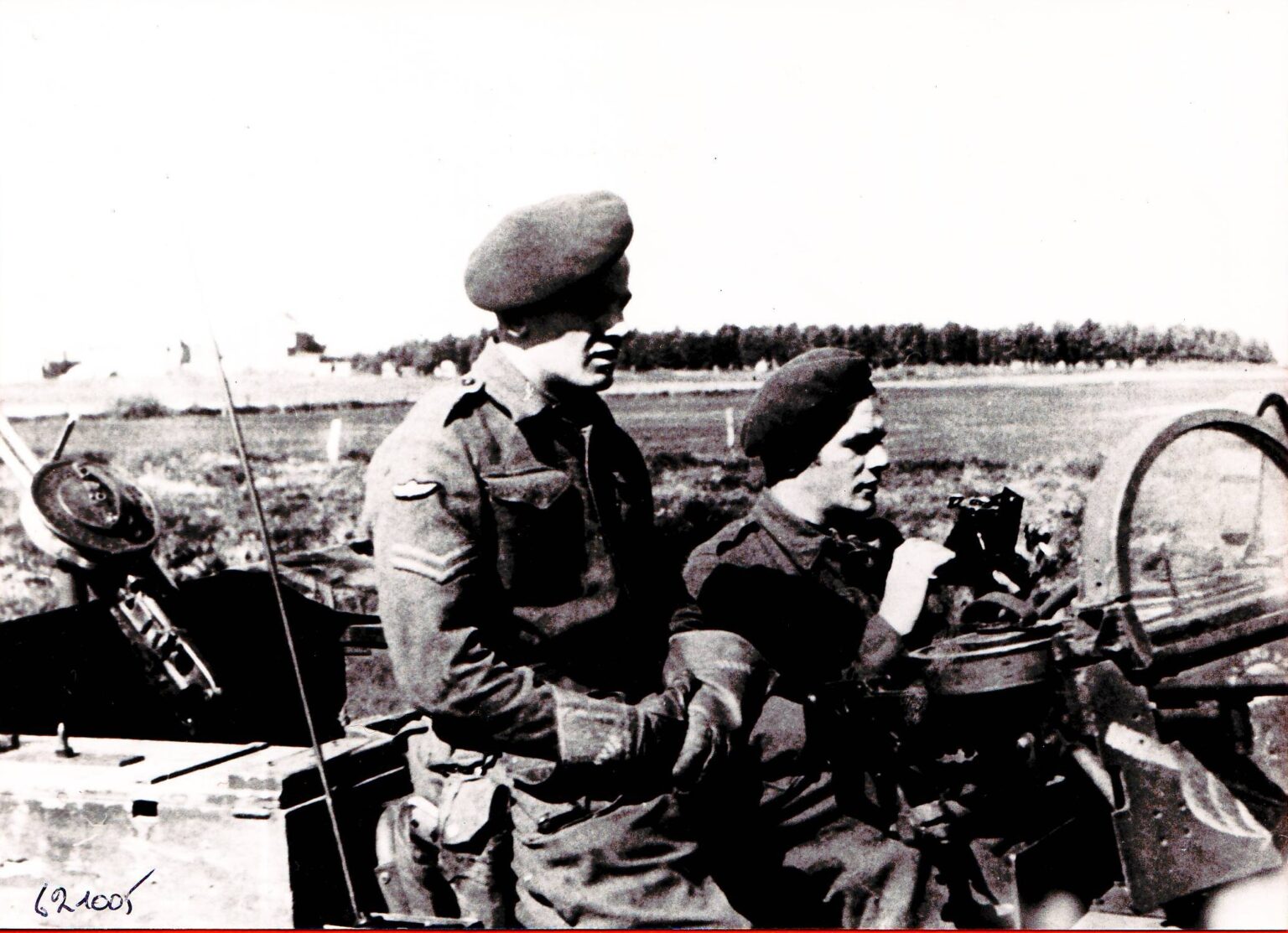The 5th Special Air Service or 5th SAS was an elite airborne unit during World War II, consisting entirely of Belgian volunteers. It saw action as part of the SAS Brigade in Normandy, Northern France, Belgium, the Netherlands and Germany. Initially trained in sabotage and intelligence gathering, they converted to motorised reconnaissance on armoured jeeps. They were reknown for being the first Allied unit to set foot onto Belgian soil and the first to cross the Siegfried line. This latter feat although was merely accomplished by accident.

A Belgian Independent Parachute Company was officially installed at Malvern Wells (Worcestershire) on the 8th of May 1942 by Mr Henri Rolin, Belgian under – Secretary of Defence.
It comprised the following:
1. A Company 2nd Battalion Belgian Fusiliers, a Battalion mainly made up of volunteers from South and North America assembled since January 1941, who moved to Great Britain in June 1941. “A” Company as a whole had volunteered in February 1942 to be trained to become an Independent Parachute Company under the direction of Lt. Freddy Limbosch as Chief Instructor.
2. A platoon of the 1st Battalion Belgian Fusiliers with some qualified parachutists (since January 1942).
3. Volunteers from other units of the Belgian Forces who had escaped from occupied Belgium via France, Spain and Gibraltar.

The newly formed Company continued to train as an Independent Parachute Company making extensive use of the many schools and training facilities offered by the British (the first Parachute wings worn by Belgians were earned at Ringway parachute school in early 1942). The unit was attached for 3 months to the 8th Parachute Battalion of the 6th Airborne Division in 1943, then spent a month intensive training in December 1943 at the ‘Allied Training Centre’ Inverlochy Castle (Fort William), and finally moved, in February 1944, to Loudon Castle Camp, near Galston (Ayrshire) to join the Special Air Service (S.A.S.) Brigade.
Like all military units and formations the men came from all walks of life and this was especially true with this particular unit. The volunteers included a former world cycling champion, lawyers, farmers, labourers, lumberjacks, a circus acrobat, a professional wrestler and even three bona fide barons. Some of them spoke French, some spoke Dutch while others spoke only English. These differences in upbringing, class, lifestyle and even language might have seemed problematic but a real esprit de corps developed quickly within the unit. The commanding officer, Lieutenant Dr. (Dent.) Edouard “Eddy” Blondeel DSO, who replaced Commander J.Thise after he was injured, was both a qualified engineer and dentist. The men who volunteered came from all four corners of the world to carry on the fight against the Nazis. Not all of them could even speak the same language. Some spoke.

The role of the Belgian SAS parachutists during the Second World War was primarily sabotage, intelligence gathering and reconnaissance. The men saw their first action towards the end of July 1944 in France. During the Ardennes offensive in 1944 the unit was regrouped and equipped with armoured jeeps. As a reconnaissance squadron, they executed security and reconnaissance missions in order to support the 6th British Airborne Division. In 1945 they were used for counter-intelligence work which involved the location and arrest of top ranking Nazis and war criminals.
In the beginning of April 1945 the Belgian SAS Squadron consisted of three reconnaissance squads which were deployed in the north of Holland and in Germany. After the capitulation of the Germans on the 8th of May 1945 the Belgian SAS participated in ‘Counter Intelligence’ missions in both Germany and Denmark.
At the end of the war the Belgian SAS Regiment had much to be proud of. They had been the first allied unit to set foot in Belgium & Germany and the only Belgian unit permanently on active deployment between July 1944 and May 1945. They had also been responsible for the capture of Admiral Doenitz’s government in Flensburg and the German Foreign minister Von Ribbentrop.
